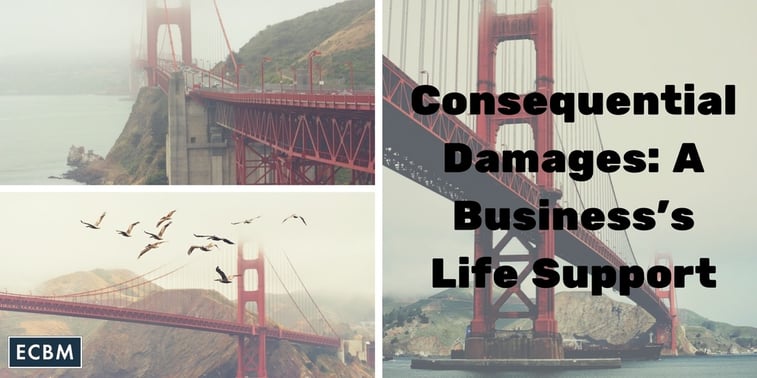
A Familiar Story
The storefront of a merchant business suffers a significant fire. The damage to the actual physical structures in the store may only total a few thousand dollars. However, the store has to close for several months, meaning a significant loss of revenue. The merchant’s expenses - things such as rent, insurance premiums, utilities and the like - have not changed. Unfortunately, the merchant is no longer producing the income to cover those expenses.
In insurance parlance, these types of indirect losses are called “consequential damages.”The term originates from a mid nineteenth century English lawsuit that allowed the victim of a breach of contract to recover this type of economic loss. The concept has several other names in the insurance world, including time-element losses or business interruption losses.
Policies can vary widely in the extent to which they cover and handle consequential damages. Perhaps the most important element to a successful claim for consequential damages is that it must flow from a covered risk. This may be something like a fire in the case of a property insurance policy or a crash in the event of an auto policy. In the absence of a direct tie to a covered incident, consequential damages are normally non-recoverable.
Documenting damages for this type of loss can also cause severe headaches. Normally, the policyholder has the obligation to maintain the documentation necessary to prove their business income losses. Hopefully, that means detailed spreadsheets indicated money-in and money-out for each property that could be subject to such a loss. The extent to which a business interruption claim can be impacted by market fluctuations, seasonality and similar issues can vary wildly depending and so can the coverage of the policy. How the claim is handled can determined the ongoing viability of the business.
In a famous case involving Duane Reade, the New York City pharmacy that lost a highly profitable store to the September 11 attacks, relatively small differences in interpretations of their policy resulted in a potential $40 million recovery being reduced to $10 million. For smaller businesses, the ability to plan ahead and document for a prolonged loss of business due to a claim can be the difference between staying ahead of the game and bankruptcy.
As with many situations in insurance, an ounce fop prevention is worth a pound of cure and mitigating losses is always key. Businesses need comprehensive risk management plans that fully understand not just basic factors such as insurable value of property but its contribution to business income streams, its exposure to catastrophic risk, interdependencies of revenue, and contingent exposures. Make certain you have a broker that can direct you through this critical maze.
Are You Prepared?
- Will you be able to document expenses if your business experiences Consequential Damages?
- Do you have accurate income records for comparison to show lost income?
- Do you know who you need to contact when you have a claim?
- Be sure be in touch about a claim as soon as possible. Read Time Is Money! How Shelving That Claim Hurts Your Bottom Line
